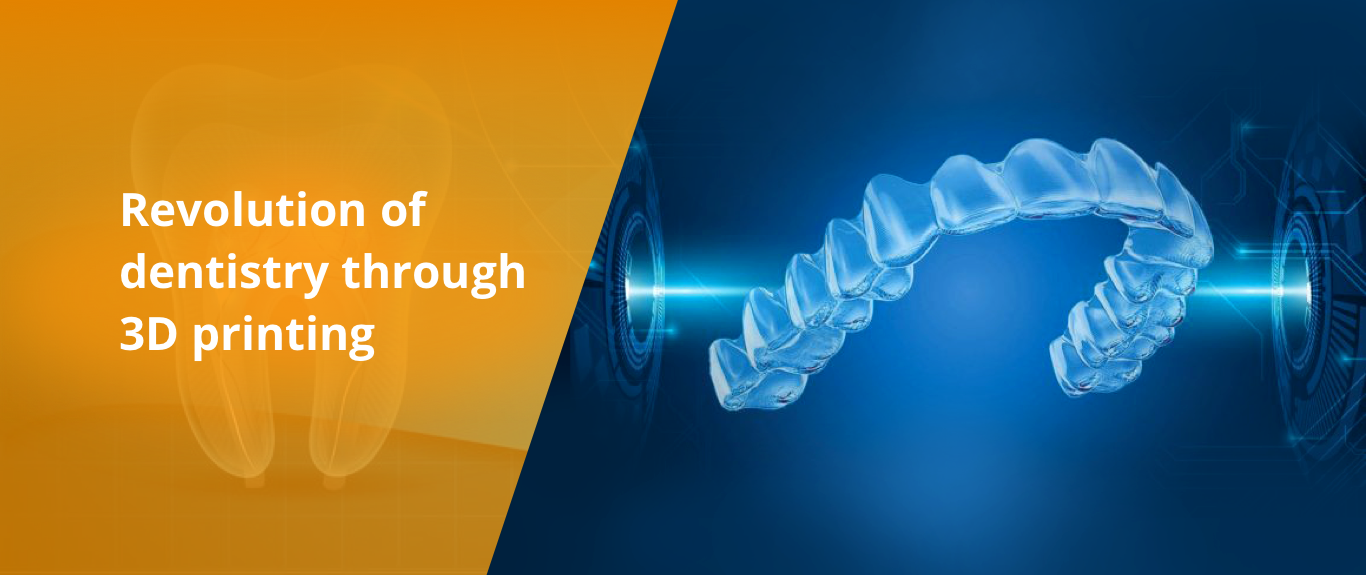Revolution of Dentistry through 3D Printing

3D printing is one of the fastest developing technologies that has gained a lot of acceptance in the field of dentistry. Contrary to conventional wax techniques and subtractive digital numeric computerized controlled methods, three-dimensional printing offers extensive design and creation advantages. 3D printing techniques enables creation of various products with a wide range of materials such as metals, plastics and ceramics. Though this process was first available in the market around three decades ago but its widespread popularity in recent times can be credited to the lapse of numerous licenses and patents and hence is often referred to as one of the most vital innovations of the next industrial revolution. The transformation from industrial products to products required for dentistry is highly dependent on the physical and biological properties of each of the chosen material as accuracy and finesse becomes of utmost importance for any sort of clinical use. Let us take a sneak peek into few applications of 3D printing that aide dentists around the globe:
- Reconstruction or replacement of damaged tooth – A small digital wand is provided to the dentist who scans the inside of the mouth of the patient with it. This scanning results in the creation of a three-dimensional picture of the gums and teeth which gets saved in the computer. A specialized software named Computer Aided Design or simply CAD empowers dentists to digitally create the replacement or to be repaired tooth precisely and then the finished product gets printed on a specialized 3D printer.
- Creation of orthodontic model – Prior to the availability of 3D printing techniques, patients had to bite down on soft clay particle so that it could get hardened to a mold which was then used for creation of braces. But, with 3D printing technology, a simple scan and print technique can easily create accurate orthodontic products.
- Production of caps, crowns, dentures and bridges – Similar to the process mentioned above, 3D printing can be leveraged for production of several kinds of dental implants with the only difference being the precision of the material used in the process of printing.
- Construction of surgical tools – Apart from orthodontic products and dental implants, 3D printers can also be used to construct drill guide tools that are used for different dental procedures.
For centuries, dentists have relied on conventional techniques for any dental procedures or apparatus. With the advent of 3D printing, it is important to understand some of the benefits of the process over conventional techniques for dentistry:
- Money Saver – Setting up a dental laboratory requires significant amount of money for any dental practitioner. Initial setup cost alone is quite high and apart from the initial setup, skilled staff needs to be employed for designing proper dental Implants thereby resulting in a considerable ongoing investment. The costs can go even higher up depending upon the number of patients and the volume of work each month. Here comes the cost effectiveness of 3D printing. Cost of 3D printers are quite low compared to setting up a dental laboratory which also includes a starter pack of materials. Though creation of dental implants, tools, orthodontic products factor into ongoing cost but it is way cheaper than running any dental laboratory. The high cost of running a successful dental lab gets reflected in the bills of incoming patients as well. While using traditional techniques, cost of any dental procedure can be quite high as compared to 3D printing technique. This not only reduces cost of dental procedures undertaken by patients but also increases profit margin of dentists.
- Time Saver – Making molds manually involves considerable amount of time whereas 3D printing enables creation of multiple molds or implants simultaneously in a batch. Hence, a lot of time gets saved by this technique by ramping of production capacity.
- Accuracy – 3D printers transform digital images into physical structures through the process of printing 16-micron thick layers with utmost precision for each and every printed product. Hence, manual errors are completely negated and the end results benefit both patients as well as dentists.
Thereby it is needless to say that that 3D printing technology has immense potential towards creating greater inroads in the field of dentistry. In Dentistry, since every implant or orthodontist product created needs to be custom-made for each patient, the precision delivered by 3D printing technique becomes one of the key factors for becoming the first choice for dentists and patients.


